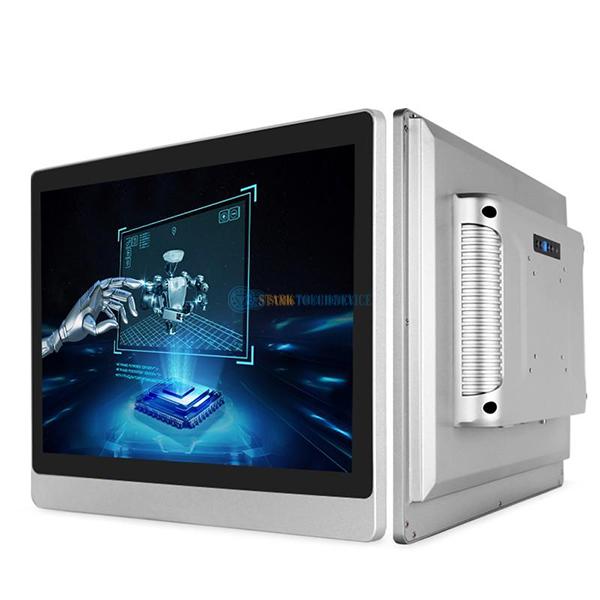Welcome STARK TOUCH DEVICE!
Solutions
Loose tightening and maintenance of industrial control computer components
Industrial Control Computer Component Loosening and Tightening Maintenance Guide
Industrial control computers (ICCs) are critical to modern manufacturing, automation, and energy sectors. Their ability to operate continuously in harsh environments—such as high temperatures, vibrations, and dust—makes them susceptible to component loosening. This guide outlines practical steps to identify, inspect, and secure loose components, ensuring optimal performance and longevity.

Understanding the Risks of Loose Components
Loose components in ICCs can disrupt operations, cause system failures, or even lead to safety hazards. Common issues include:
Intermittent Functionality: Loose memory modules or expansion cards may cause erratic behavior, such as sudden crashes or data corruption.
Thermal Management Failures: Detached CPU heatsinks or fan assemblies can lead to overheating, reducing component lifespan.
Electrical Contact Issues: Poorly seated connectors or cables may result in signal loss, communication errors, or power interruptions.
Vibration from machinery, thermal expansion/contraction, and physical handling during maintenance are primary causes of loosening. Regular checks are essential to mitigate these risks.
Step-by-Step Maintenance Process
1. Pre-Maintenance Preparation
Before inspecting the ICC, take the following precautions:
Power Down: Shut off the system and disconnect it from the power source.
Static Discharge: Wear an anti-static wristband and work on an ESD-safe surface to prevent electrostatic damage.
Documentation: Refer to the ICC’s manual for component layouts and torque specifications.
2. Visual and Physical Inspection
Begin with a thorough examination of the ICC’s exterior and interior:
Case Integrity: Check for cracks, deformations, or loose screws on the chassis. Tighten any visible fasteners.
Cable Connections: Inspect power, data, and peripheral cables for secure seating. Look for frayed wires or damaged connectors.
Component Alignment: Verify that cards (e.g., GPU, NIC) are fully inserted into slots. Gently press down to ensure proper engagement.
Heatsink and Fan Assembly: Ensure the CPU heatsink is firmly attached, with thermal paste evenly distributed. Check fan blades for obstructions and confirm mounting screws are tight.
3. Component-Specific Checks
Memory Modules
Remove and reseat RAM sticks, applying even pressure on both ends.
Use a soft brush to clean contacts if dust is present. Avoid abrasive materials.
Storage Drives
For SSDs/HDDs, check mounting brackets and SATA/power cables.
If using hot-swap bays, confirm drives are locked in place.
Expansion Cards
PCIe cards (e.g., fieldbus adapters) should sit flush with the slot. Realign if misaligned.
Secure cards with screws provided by the manufacturer.
Power Supply Unit (PSU)
Verify that the PSU is firmly screwed into the chassis.
Check for loose cables inside the unit (if accessible) and tighten terminal blocks.
Advanced Troubleshooting Techniques
If loosening persists despite initial checks, employ these methods:
Diagnostic Tools
Hardware Monitors: Use built-in BIOS tools or third-party software to track temperatures, voltages, and fan speeds. Abnormal readings may indicate loose connections.
POST Codes: Decode beep codes or LED indicators during startup to pinpoint hardware issues.
Thermal Imaging
Infrared cameras can identify overheating areas caused by poor heatsink contact. Reseat the heatsink and reapply thermal paste if needed.
Vibration Analysis
For ICCs in high-vibration environments, use accelerometers to measure resonance frequencies. Adjust mounting or add damping materials to reduce stress on components.
Post-Maintenance Verification
After tightening components:
Power On Test: Boot the ICC and monitor for errors. Run stress tests to ensure stability.
Functional Checks: Verify communication with connected devices (e.g., PLCs, sensors).
Logging: Document all actions taken, including parts replaced or torque values applied.
Long-Term Prevention Strategies
To minimize future loosening:
Scheduled Inspections: Incorporate component checks into routine maintenance cycles (e.g., quarterly).
Environmental Controls: Maintain stable temperatures and humidity levels. Use air filters to reduce dust ingress.
Locking Mechanisms: For critical applications, consider screws with thread-locking compounds or snap-in card retainers.
Handling Challenging Scenarios
Recurrent Loosening
If components repeatedly loosen, investigate:
Design Flaws: Contact the manufacturer if slots or brackets appear defective.
External Forces: Relocate the ICC away from vibrating machinery or install shock absorbers.
Corroded Contacts
In humid environments, oxidation may weaken connections. Clean contacts with isopropyl alcohol and a lint-free cloth.
Conclusion
Proactive maintenance of industrial control computers is vital for operational reliability. By systematically inspecting, tightening, and verifying components, technicians can prevent costly downtime and extend equipment life. Regular training on ICC-specific procedures ensures teams are equipped to handle evolving challenges in industrial automation.


